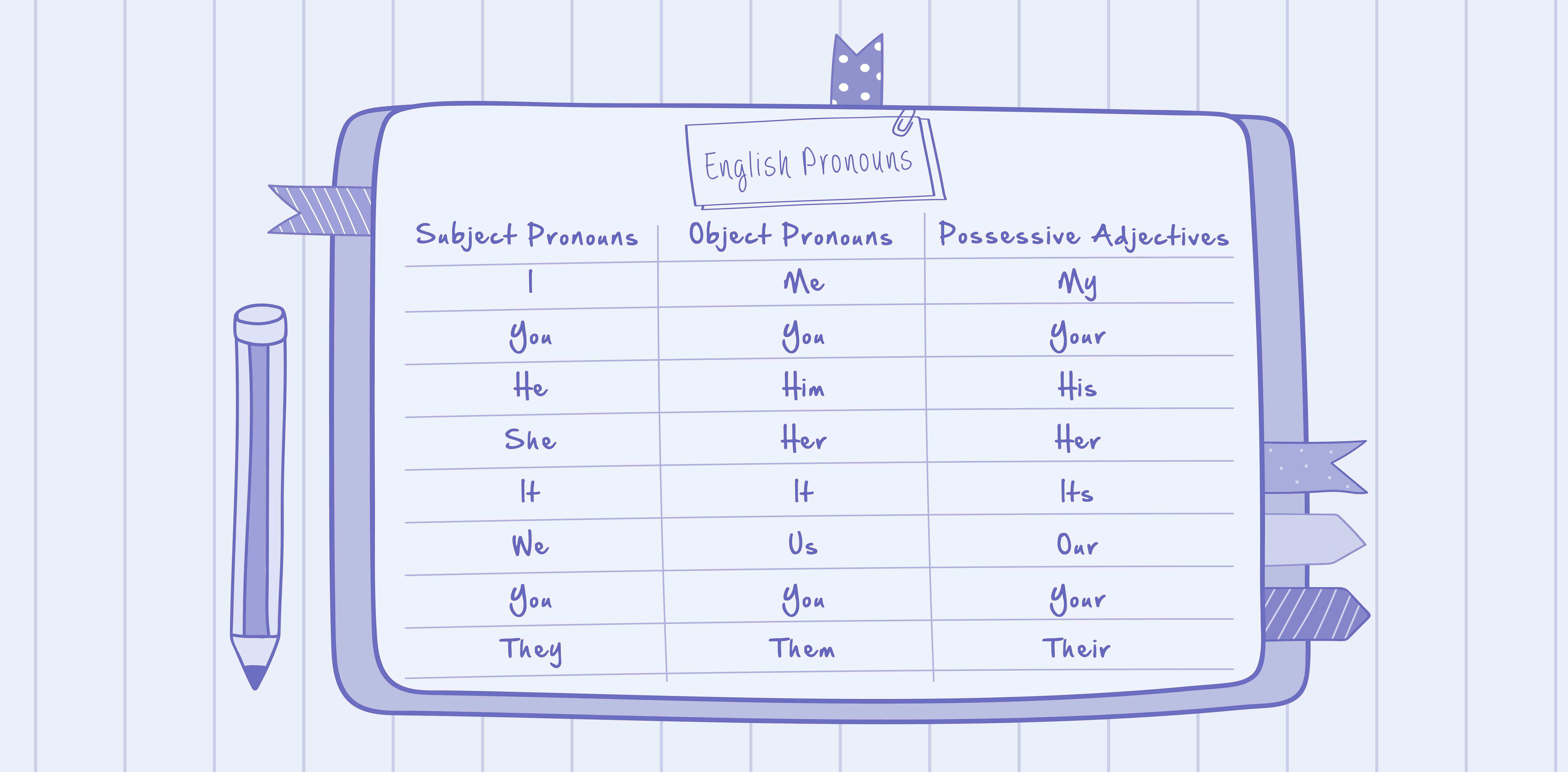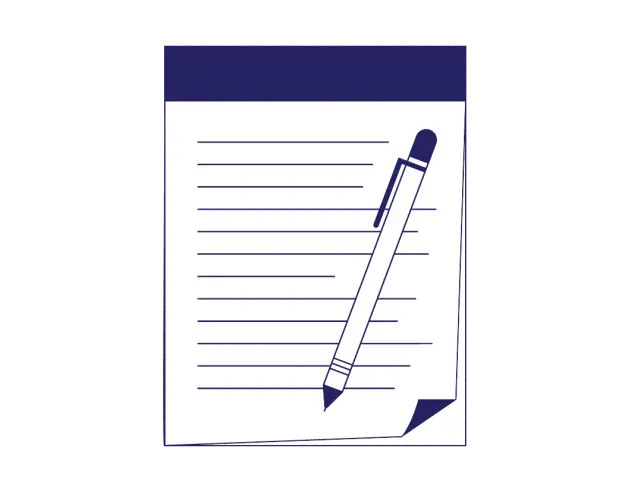
Tips for Online Students , Tips for Students

How To Write An Essay: Beginner Tips And Tricks
Updated: July 11, 2022
Published: June 22, 2021

Many students dread writing essays, but essay writing is an important skill to develop in high school, university, and even into your future career. By learning how to write an essay properly, the process can become more enjoyable and you’ll find you’re better able to organize and articulate your thoughts.
When writing an essay, it’s common to follow a specific pattern, no matter what the topic is. Once you’ve used the pattern a few times and you know how to structure an essay, it will become a lot more simple to apply your knowledge to every essay.
No matter which major you choose, you should know how to craft a good essay. Here, we’ll cover the basics of essay writing, along with some helpful tips to make the writing process go smoothly.

Photo by Laura Chouette on Unsplash
Types of Essays
Think of an essay as a discussion. There are many types of discussions you can have with someone else. You can be describing a story that happened to you, you might explain to them how to do something, or you might even argue about a certain topic.
When it comes to different types of essays, it follows a similar pattern. Like a friendly discussion, each type of essay will come with its own set of expectations or goals.
For example, when arguing with a friend, your goal is to convince them that you’re right. The same goes for an argumentative essay.
Here are a few of the main essay types you can expect to come across during your time in school:
Narrative Essay
This type of essay is almost like telling a story, not in the traditional sense with dialogue and characters, but as if you’re writing out an event or series of events to relay information to the reader.
Persuasive Essay
Here, your goal is to persuade the reader about your views on a specific topic.
Descriptive Essay
This is the kind of essay where you go into a lot more specific details describing a topic such as a place or an event.
Argumentative Essay
In this essay, you’re choosing a stance on a topic, usually controversial, and your goal is to present evidence that proves your point is correct.
Expository Essay
Your purpose with this type of essay is to tell the reader how to complete a specific process, often including a step-by-step guide or something similar.
Compare and Contrast Essay
You might have done this in school with two different books or characters, but the ultimate goal is to draw similarities and differences between any two given subjects.
The Main Stages of Essay Writing
When it comes to writing an essay, many students think the only stage is getting all your ideas down on paper and submitting your work. However, that’s not quite the case.
There are three main stages of writing an essay, each one with its own purpose. Of course, writing the essay itself is the most substantial part, but the other two stages are equally as important.
So, what are these three stages of essay writing? They are:
Preparation
Before you even write one word, it’s important to prepare the content and structure of your essay. If a topic wasn’t assigned to you, then the first thing you should do is settle on a topic. Next, you want to conduct your research on that topic and create a detailed outline based on your research. The preparation stage will make writing your essay that much easier since, with your outline and research, you should already have the skeleton of your essay.
Writing is the most time-consuming stage. In this stage, you will write out all your thoughts and ideas and craft your essay based on your outline. You’ll work on developing your ideas and fleshing them out throughout the introduction, body, and conclusion (more on these soon).
In the final stage, you’ll go over your essay and check for a few things. First, you’ll check if your essay is cohesive, if all the points make sense and are related to your topic, and that your facts are cited and backed up. You can also check for typos, grammar and punctuation mistakes, and formatting errors.
The Five-Paragraph Essay
We mentioned earlier that essay writing follows a specific structure, and for the most part in academic or college essays , the five-paragraph essay is the generally accepted structure you’ll be expected to use.
The five-paragraph essay is broken down into one introduction paragraph, three body paragraphs, and a closing paragraph. However, that doesn’t always mean that an essay is written strictly in five paragraphs, but rather that this structure can be used loosely and the three body paragraphs might become three sections instead.
Let’s take a closer look at each section and what it entails.
Introduction
As the name implies, the purpose of your introduction paragraph is to introduce your idea. A good introduction begins with a “hook,” something that grabs your reader’s attention and makes them excited to read more.
Another key tenant of an introduction is a thesis statement, which usually comes towards the end of the introduction itself. Your thesis statement should be a phrase that explains your argument, position, or central idea that you plan on developing throughout the essay.
You can also include a short outline of what to expect in your introduction, including bringing up brief points that you plan on explaining more later on in the body paragraphs.
Here is where most of your essay happens. The body paragraphs are where you develop your ideas and bring up all the points related to your main topic.
In general, you’re meant to have three body paragraphs, or sections, and each one should bring up a different point. Think of it as bringing up evidence. Each paragraph is a different piece of evidence, and when the three pieces are taken together, it backs up your main point — your thesis statement — really well.
That being said, you still want each body paragraph to be tied together in some way so that the essay flows. The points should be distinct enough, but they should relate to each other, and definitely to your thesis statement. Each body paragraph works to advance your point, so when crafting your essay, it’s important to keep this in mind so that you avoid going off-track or writing things that are off-topic.
Many students aren’t sure how to write a conclusion for an essay and tend to see their conclusion as an afterthought, but this section is just as important as the rest of your work.
You shouldn’t be presenting any new ideas in your conclusion, but you should summarize your main points and show how they back up your thesis statement.
Essentially, the conclusion is similar in structure and content to the introduction, but instead of introducing your essay, it should be wrapping up the main thoughts and presenting them to the reader as a singular closed argument.

Photo by AMIT RANJAN on Unsplash
Steps to Writing an Essay
Now that you have a better idea of an essay’s structure and all the elements that go into it, you might be wondering what the different steps are to actually write your essay.
Don’t worry, we’ve got you covered. Instead of going in blind, follow these steps on how to write your essay from start to finish.
Understand Your Assignment
When writing an essay for an assignment, the first critical step is to make sure you’ve read through your assignment carefully and understand it thoroughly. You want to check what type of essay is required, that you understand the topic, and that you pay attention to any formatting or structural requirements. You don’t want to lose marks just because you didn’t read the assignment carefully.
Research Your Topic
Once you understand your assignment, it’s time to do some research. In this step, you should start looking at different sources to get ideas for what points you want to bring up throughout your essay.
Search online or head to the library and get as many resources as possible. You don’t need to use them all, but it’s good to start with a lot and then narrow down your sources as you become more certain of your essay’s direction.
Start Brainstorming
After research comes the brainstorming. There are a lot of different ways to start the brainstorming process . Here are a few you might find helpful:
- Think about what you found during your research that interested you the most
- Jot down all your ideas, even if they’re not yet fully formed
- Create word clouds or maps for similar terms or ideas that come up so you can group them together based on their similarities
- Try freewriting to get all your ideas out before arranging them
Create a Thesis
This is often the most tricky part of the whole process since you want to create a thesis that’s strong and that you’re about to develop throughout the entire essay. Therefore, you want to choose a thesis statement that’s broad enough that you’ll have enough to say about it, but not so broad that you can’t be precise.
Write Your Outline
Armed with your research, brainstorming sessions, and your thesis statement, the next step is to write an outline.
In the outline, you’ll want to put your thesis statement at the beginning and start creating the basic skeleton of how you want your essay to look.
A good way to tackle an essay is to use topic sentences . A topic sentence is like a mini-thesis statement that is usually the first sentence of a new paragraph. This sentence introduces the main idea that will be detailed throughout the paragraph.
If you create an outline with the topic sentences for your body paragraphs and then a few points of what you want to discuss, you’ll already have a strong starting point when it comes time to sit down and write. This brings us to our next step…
Write a First Draft
The first time you write your entire essay doesn’t need to be perfect, but you do need to get everything on the page so that you’re able to then write a second draft or review it afterward.
Everyone’s writing process is different. Some students like to write their essay in the standard order of intro, body, and conclusion, while others prefer to start with the “meat” of the essay and tackle the body, and then fill in the other sections afterward.
Make sure your essay follows your outline and that everything relates to your thesis statement and your points are backed up by the research you did.
Revise, Edit, and Proofread
The revision process is one of the three main stages of writing an essay, yet many people skip this step thinking their work is done after the first draft is complete.
However, proofreading, reviewing, and making edits on your essay can spell the difference between a B paper and an A.
After writing the first draft, try and set your essay aside for a few hours or even a day or two, and then come back to it with fresh eyes to review it. You might find mistakes or inconsistencies you missed or better ways to formulate your arguments.
Add the Finishing Touches
Finally, you’ll want to make sure everything that’s required is in your essay. Review your assignment again and see if all the requirements are there, such as formatting rules, citations, quotes, etc.
Go over the order of your paragraphs and make sure everything makes sense, flows well, and uses the same writing style .
Once everything is checked and all the last touches are added, give your essay a final read through just to ensure it’s as you want it before handing it in.
A good way to do this is to read your essay out loud since you’ll be able to hear if there are any mistakes or inaccuracies.
Essay Writing Tips
With the steps outlined above, you should be able to craft a great essay. Still, there are some other handy tips we’d recommend just to ensure that the essay writing process goes as smoothly as possible.
- Start your essay early. This is the first tip for a reason. It’s one of the most important things you can do to write a good essay. If you start it the night before, then you won’t have enough time to research, brainstorm, and outline — and you surely won’t have enough time to review.
- Don’t try and write it in one sitting. It’s ok if you need to take breaks or write it over a few days. It’s better to write it in multiple sittings so that you have a fresh mind each time and you’re able to focus.
- Always keep the essay question in mind. If you’re given an assigned question, then you should always keep it handy when writing your essay to make sure you’re always working to answer the question.
- Use transitions between paragraphs. In order to improve the readability of your essay, try and make clear transitions between paragraphs. This means trying to relate the end of one paragraph to the beginning of the next one so the shift doesn’t seem random.
- Integrate your research thoughtfully. Add in citations or quotes from your research materials to back up your thesis and main points. This will show that you did the research and that your thesis is backed up by it.
Wrapping Up
Writing an essay doesn’t need to be daunting if you know how to approach it. Using our essay writing steps and tips, you’ll have better knowledge on how to write an essay and you’ll be able to apply it to your next assignment. Once you do this a few times, it will become more natural to you and the essay writing process will become quicker and easier.
If you still need assistance with your essay, check with a student advisor to see if they offer help with writing. At University of the People(UoPeople), we always want our students to succeed, so our student advisors are ready to help with writing skills when necessary.
Related Articles
- PRO Courses Guides New Tech Help Pro Expert Videos About wikiHow Pro Upgrade Sign In
- EDIT Edit this Article
- EXPLORE Tech Help Pro About Us Random Article Quizzes Request a New Article Community Dashboard This Or That Game Popular Categories Arts and Entertainment Artwork Books Movies Computers and Electronics Computers Phone Skills Technology Hacks Health Men's Health Mental Health Women's Health Relationships Dating Love Relationship Issues Hobbies and Crafts Crafts Drawing Games Education & Communication Communication Skills Personal Development Studying Personal Care and Style Fashion Hair Care Personal Hygiene Youth Personal Care School Stuff Dating All Categories Arts and Entertainment Finance and Business Home and Garden Relationship Quizzes Cars & Other Vehicles Food and Entertaining Personal Care and Style Sports and Fitness Computers and Electronics Health Pets and Animals Travel Education & Communication Hobbies and Crafts Philosophy and Religion Work World Family Life Holidays and Traditions Relationships Youth
- Browse Articles
- Learn Something New
- Quizzes Hot
- This Or That Game New
- Train Your Brain
- Explore More
- Support wikiHow
- About wikiHow
- Log in / Sign up
- Education and Communications
- College University and Postgraduate
- Academic Writing
How to Write an Essay
Last Updated: April 2, 2024 Fact Checked
This article was co-authored by Christopher Taylor, PhD and by wikiHow staff writer, Megaera Lorenz, PhD . Christopher Taylor is an Adjunct Assistant Professor of English at Austin Community College in Texas. He received his PhD in English Literature and Medieval Studies from the University of Texas at Austin in 2014. There are 18 references cited in this article, which can be found at the bottom of the page. This article has been fact-checked, ensuring the accuracy of any cited facts and confirming the authority of its sources. This article has been viewed 7,930,069 times.
An essay is a common type of academic writing that you'll likely be asked to do in multiple classes. Before you start writing your essay, make sure you understand the details of the assignment so that you know how to approach the essay and what your focus should be. Once you've chosen a topic, do some research and narrow down the main argument(s) you'd like to make. From there, you'll need to write an outline and flesh out your essay, which should consist of an introduction, body, and conclusion. After your essay is drafted, spend some time revising it to ensure your writing is as strong as possible.
Understanding Your Assignment

- The compare/contrast essay , which focuses on analyzing the similarities and differences between 2 things, such as ideas, people, events, places, or works of art.
- The narrative essay , which tells a story.
- The argumentative essay , in which the writer uses evidence and examples to convince the reader of their point of view.
- The critical or analytical essay, which examines something (such as a text or work of art) in detail. This type of essay may attempt to answer specific questions about the subject or focus more generally on its meaning.
- The informative essay , that educates the reader about a topic.

- How long your essay should be
- Which citation style to use
- Formatting requirements, such as margin size , line spacing, and font size and type
Christopher Taylor, PhD
Christopher Taylor, Professor of English, tells us: "Most essays will contain an introduction, a body or discussion portion, and a conclusion. When assigned a college essay, make sure to check the specific structural conventions related to your essay genre , your field of study, and your professor's expectations."

- If you're doing a research-based essay , you might find some inspiration from reading through some of the major sources on the subject.
- For a critical essay, you might choose to focus on a particular theme in the work you're discussing, or analyze the meaning of a specific passage.

- If you're having trouble narrowing down your topic, your instructor might be able to provide guidance or inspiration.
Planning and Organizing Your Essay

- Academic books and journals tend to be good sources of information. In addition to print sources, you may be able to find reliable information in scholarly databases such as JSTOR and Google Scholar.
- You can also look for primary source documents, such as letters, eyewitness accounts, and photographs.
- Always evaluate your sources critically. Even research papers by reputable academics can contain hidden biases, outdated information, and simple errors or faulty logic.
Tip: In general, Wikipedia articles are not considered appropriate sources for academic writing. However, you may be able to find useful sources in the “References” section at the end of the article.

- You might find it helpful to write your notes down on individual note cards or enter them into a text document on your computer so you can easily copy, paste , and rearrange them however you like.
- Try organizing your notes into different categories so you can identify specific ideas you'd like to focus on. For example, if you're analyzing a short story , you might put all your notes on a particular theme or character together.

- For example, if your essay is about the factors that led to the end of the Bronze Age in the ancient Middle East, you might focus on the question, “What role did natural disasters play in the collapse of Late Bronze Age society?”

- One easy way to come up with a thesis statement is to briefly answer the main question you would like to address.
- For example, if the question is “What role did natural disasters play in the collapse of Late Bronze Age society?” then your thesis might be, “Natural disasters during the Late Bronze Age destabilized local economies across the region. This set in motion a series of mass migrations of different peoples, creating widespread conflict that contributed to the collapse of several major Bronze Age political centers.”

- When you write the outline, think about how you would like to organize your essay. For example, you might start with your strongest arguments and then move to the weakest ones. Or, you could begin with a general overview of the source you're analyzing and then move on to addressing the major themes, tone, and style of the work.
- Introduction
- Point 1, with supporting examples
- Point 2, with supporting examples
- Point 3, with supporting examples
- Major counter-argument(s) to your thesis
- Your rebuttals to the counter-argument(s)
Drafting the Essay

- For example, if you're writing a critical essay about a work of art, your introduction might start with some basic information about the work, such as who created it, when and where it was created, and a brief description of the work itself. From there, introduce the question(s) about the work you'd like to address and present your thesis.
- A strong introduction should also contain a brief transitional sentence that creates a link to the first point or argument you would like to make. For example, if you're discussing the use of color in a work of art, lead-in by saying you'd like to start with an overview of symbolic color use in contemporary works by other artists.
Tip: Some writers find it helpful to write the introduction after they've written the rest of the essay. Once you've written out your main points, it's easier to summarize the gist of your essay in a few introductory sentences.

- For example, your topic sentence might be something like, “Arthur Conan Doyle's Sherlock Holmes stories are among the many literary influences apparent in P. G. Wodehouse's Jeeves novels.” You could then back this up by quoting a passage that contains a reference to Sherlock Holmes.
- Try to show how the arguments in each paragraph link back to the main thesis of your essay.

- When creating transitions, transitional phrases can be helpful. For example, use words and phrases such as “In addition,” “Therefore,” “Similarly,” “Subsequently,” or “As a result.”
- For example, if you've just discussed the use of color to create contrast in a work of art, you might start the next paragraph with, “In addition to color, the artist also uses different line weights to distinguish between the more static and dynamic figures in the scene.”

- For example, if you're arguing that a particular kind of shrimp decorates its shell with red algae to attract a mate, you'll need to address the counterargument that the shell decoration is a warning to predators. You might do this by presenting evidence that the red shrimp are, in fact, more likely to get eaten than shrimp with undecorated shells.

- The way you cite your sources will vary depending on the citation style you're using. Typically, you'll need to include the name of the author, the title and publication date of the source, and location information such as the page number on which the information appears.
- In general, you don't need to cite common knowledge. For example, if you say, “A zebra is a type of mammal,” you probably won't need to cite a source.
- If you've cited any sources in the essay, you'll need to include a list of works cited (or a bibliography ) at the end.

- Keep your conclusion brief. While the appropriate length will vary based on the length of the essay, it should typically be no longer than 1-2 paragraphs.
- For example, if you're writing a 1,000-word essay, your conclusion should be about 4-5 sentences long. [16] X Research source
Revising the Essay

- If you don't have time to spend a couple of days away from your essay, at least take a few hours to relax or work on something else.

- Excessive wordiness
- Points that aren't explained enough
- Tangents or unnecessary information
- Unclear transitions or illogical organization
- Spelling , grammar , style, and formatting problems
- Inappropriate language or tone (e.g., slang or informal language in an academic essay)

- You might have to cut material from your essay in some places and add new material to others.
- You might also end up reordering some of the content of the essay if you think that helps it flow better.

- Read over each line slowly and carefully. It may be helpful to read each sentence out loud to yourself.
Tip: If possible, have someone else check your work. When you've been looking at your writing for too long, your brain begins to fill in what it expects to see rather than what's there, making it harder for you to spot mistakes.

Expert Q&A

You Might Also Like

- ↑ https://www.yourdictionary.com/articles/essay-types
- ↑ https://students.unimelb.edu.au/academic-skills/resources/essay-writing/six-top-tips-for-writing-a-great-essay
- ↑ https://owl.purdue.edu/owl/general_writing/common_writing_assignments/research_papers/choosing_a_topic.html
- ↑ https://writingcenter.fas.harvard.edu/tips-reading-assignment-prompt
- ↑ https://library.unr.edu/help/quick-how-tos/writing/integrating-sources-into-your-paper
- ↑ https://advice.writing.utoronto.ca/researching/notes-from-research/
- ↑ https://writingcenter.fas.harvard.edu/pages/developing-thesis
- ↑ https://writingcenter.fas.harvard.edu/pages/outlining
- ↑ https://lsa.umich.edu/sweetland/undergraduates/writing-guides/how-do-i-write-an-intro--conclusion----body-paragraph.html
- ↑ https://owl.purdue.edu/owl/general_writing/academic_writing/essay_writing/argumentative_essays.html
- ↑ https://writingcenter.unc.edu/tips-and-tools/transitions/
- ↑ https://lsa.umich.edu/sweetland/undergraduates/writing-guides/how-do-i-incorporate-a-counter-argument.html
- ↑ https://www.plagiarism.org/article/how-do-i-cite-sources
- ↑ https://writingcenter.unc.edu/tips-and-tools/conclusions/
- ↑ https://www.utsc.utoronto.ca/twc/sites/utsc.utoronto.ca.twc/files/resource-files/Intros-Conclusions.pdf
- ↑ https://owl.purdue.edu/owl/general_writing/the_writing_process/proofreading/steps_for_revising.html
- ↑ https://open.lib.umn.edu/writingforsuccess/chapter/8-4-revising-and-editing/
- ↑ https://writing.ku.edu/writing-process
About This Article

If you need to write an essay, start by gathering information from reputable sources, like books from the library or scholarly journals online. Take detailed notes and keep track of which facts come from which sources. As you're taking notes, look for a central theme that you're interested in writing about to create your thesis statement. Then, organize your notes into an outline that supports and explains your thesis statement. Working from your outline, write an introduction and subsequent paragraphs to address each major point. Start every paragraph with a topic sentence that briefly explains the main point of that paragraph. Finally, finish your paper with a strong conclusion that sums up the most important points. For tips from our English Professor co-author on helpful revision techniques, keep reading! Did this summary help you? Yes No
- Send fan mail to authors
Reader Success Stories
Muhammad Talha Javaid
Feb 7, 2019
Did this article help you?
Gabrielle Mattijetz
May 8, 2017
Shahzad Saleem
Jun 20, 2018
Barbara Gonzalez
Aug 6, 2016
Kniziel Sanders
Oct 17, 2017

Featured Articles

Trending Articles

Watch Articles

- Terms of Use
- Privacy Policy
- Do Not Sell or Share My Info
- Not Selling Info
Don’t miss out! Sign up for
wikiHow’s newsletter

- TEFL Internship
- TEFL Masters
- Find a TEFL Course
- Special Offers
- Course Providers
- Teach English Abroad
- Find a TEFL Job
- About DoTEFL
- Our Mission
- How DoTEFL Works
Forgotten Password

- How To Write an Essay in English: 11 Tips To Write a Great Essay
- Learn English
- James Prior
- No Comments
- Updated February 23, 2024

Writing essays in English can be challenging even for native speakers, and they can be even more difficult if you’re learning English. Fortunately, there are various steps that you can take to make the essay writing process easier. In this guide, we delve into the intricacies of essay writing, providing a step-by-step approach on how to write an essay in English to help you craft more compelling and impactful essays.
So, if you want to know how to be good at writing essays in English, read on!
Important Essay Writing Considerations
Before we begin, it’s important to note that there are different types of essays in English. You could find yourself writing an academic essay, a college essay, an argumentative essay, a narrative essay, an expository essay, or an application essay, among others.
How you write an essay will depend upon the type of essay, its purpose, the subject matter, and the given topic. You therefore need to consider the goal of the essay and make sure you understand the assignment. If you’re unsure about this, seek clarification from your teacher, professor, or person who will be receiving the essay before you start writing. That way you can ensure that you are starting correctly and don’t end up submitting something that doesn’t match the initial brief.
Once you’re feeling confident about this, it’s time to get writing!
How To Write an Essay
Whether you’re a student navigating academia or a professional honing your communication skills, the ability to express your thoughts coherently in English is invaluable. And, while writing can often be a challenge, it forms a key part of communication and often comes in the form of essays.
Here we’ll run you through the steps you need to follow to write essays you can be proud of.
1. Understand the Prompt: The Foundation of Your Essay
At the core of every essay lies the prompt – an instruction that shapes and defines your writing. Before ink meets paper or fingers touch keys, it is paramount to analyze the prompt and make sure you understand it. This foundational understanding forms the bedrock upon which your entire essay will be built, so it’s vital that you uncover any requirements.
To truly grasp the essence of the prompt, consider the key terms or phrases. Identify the central essay question, discern any specific instructions, and take note of the intended scope.
For example, if the prompt requires an analysis, understand the depth of analysis expected. If you’re expected to write a narrative essay, what is it about?
You then need to consider the length of your essay. It could be that you need to write a five-paragraph essay, or you may be expected to write two pages.
The better your understanding of the prompt, the more effectively you can tailor your response. If you don’t understand the prompt and are unable to clarify it with someone, you can always seek out help from your teacher to get some valuable feedback.
Once you’ve established the exact requirements it’s time to start your preparation for the writing process. The first stage of this is to come up with a thesis statement and plan your essay.
2. Craft a Compelling Thesis Statement
With a clear understanding of the prompt, for most essays, the next step is to determine your thesis statement. This is a sentence or two that encapsulates the core of your argument, providing both you and your readers with a roadmap. A well-crafted thesis serves as your guide, ensuring a focused, purposeful essay.
The thesis statement should not merely summarize your main points on the essay topic but also articulate a specific stance or perspective. It acts as a beacon, signaling to your readers the central theme and direction of your essay. Think of it as a compass that navigates your audience through the topic you’re about to explore.
Having a strong thesis statement will be particularly important for an argumentative essay if you want to write a good essay.
However, just be aware that if you’re writing an essay from a narrative writing prompt , a thesis statement may not be as applicable. In this case, you may be better off with a good introductory paragraph that introduces what you’re going to write about. We’ll cover this shortly.
3. Build a Solid Outline
Organization is the glue that binds your ideas and essays together. Before you start writing, you should therefore create an outline for your essay. This acts as a basic structure for your essay and can include your thesis or introduction, plus the core ideas or topics that you want to cover in your essay. It can also help you establish your paragraph order so that you have a good idea of how your essay will flow before you’ve even written it.
Begin by identifying the key sections: introduction, body paragraphs, and conclusion. Break down the body into specific points or arguments, each supported by evidence or examples. This detailed structure helps maintain focus and prevents your essay from meandering into unrelated tangents and forms the initial basis of a well-written essay.
Your outline should act as the blueprint for your essay, offering a structured framework for the thoughts and arguments that will follow. This step not only aids in organizing your ideas but also ensures a logical and coherent progression throughout your essay.
4. Write a Captivating Introduction: The Hook that Ignites Interest
The introduction is your essay’s first impression, and you chance to capture your reader’s attention. Therefore, your introduction paragraph should be strong and make the reader want to learn more.
A great idea is to start with a hook. This can be a compelling anecdote, a thought-provoking question, or a striking statistic. This initial engagement sets the tone for the entire essay, inviting readers to delve further into your exploration.
Consider the introduction as a narrative in itself. It should not only introduce the topic or thesis but also create anticipation. You can use vivid language and imagery to transport your reader into the world of your essay.
By the end of the introduction, your reader should be eager to explore the arguments you’re about to put forward or read the story you’re about to tell.
5. Provide Clear Topic Sentences: Navigating the Reader Through Your Essay
Each paragraph in your essay should have a purpose, and this purpose should be encapsulated in a clear and concise topic sentence. These sentences act as signposts, guiding readers through the various facets of your argument.
Once you get into the body paragraphs, consider the topic sentence as the main idea of each paragraph. It should encapsulate the essence of the paragraph and relate directly to your thesis or the story you are telling. This approach not only facilitates a smooth flow of ideas but also ensures that each paragraph contributes meaningfully to the overarching argument.
Clarity in topic sentences enhances the overall coherence of your essay, making it easier for readers to follow and understand your narrative or arguments.
6. Support Your Arguments with Evidence: Building a Credible Case
Arguments, no matter how compelling, are strengthened by supporting evidence. When you’re writing an essay, back up your claims with relevant and credible evidence. This can take the form of quotations from authoritative sources, statistical data, or real-world examples. A well-supported argument not only validates your perspective but also demonstrates a thorough understanding of the subject matter.
When you incorporate or present evidence, consider the credibility of your sources. Peer-reviewed journals, expert opinions, and empirical data enhance the authenticity of your arguments. They can also showcase the depth of your research.
If you’re writing an academic essay, be meticulous in your citations, and adhere to the conventions of the chosen citation style (APA, MLA, Chicago, etc.).
7. Maintain Consistent Style and Tone
The mastery of writing an essay extends beyond individual sentences. You should aim for a consistent tone and style throughout your essay. This not only ensures a cohesive reading experience but also reflects a good understanding of the subject matter.
Consistency in style encompasses aspects such as sentence structure, vocabulary choice, and the use of rhetorical devices. These elements collectively contribute to the overall fluency and coherence of your essay.
You should also consider the tone of your writing. Whether formal, informal, persuasive, or analytical, the tone should align with the purpose and audience of your essay.
For example, if you’re doing a piece of narrative writing the tone is likely to be very different to that of an argumentative essay. Different writing styles can be applied to different essay types and this should be reflected in your writing process.
8. Revise and Edit
Once you’ve completed the first draft of your essay it’s time to revise and edit it. The first draft is the raw material of your essay, a foundation to be refined. Take the time to review it with a focus on clarity. Trim unnecessary words, refine overly long sentences, and ensure that each paragraph contributes seamlessly to the overall narrative. This process can transform your prose into a polished and articulate piece of writing and is a key part of writing an essay.
If you have time, it helps to approach the revision process with fresh eyes. Come back to your essay after having a break from writing and consider each sentence’s clarity, coherence, and relevance to the thesis.
Structural elements, such as paragraph transitions and the logical flow of ideas, are equally crucial. While focusing on clarity, also consider the engagement factor – does your writing captivate and maintain the reader’s interest?
The revision process is an opportunity to elevate your writing from functional to exceptional and turn a good essay into a great essay.
9. Check Grammar and Punctuation: The Finishing Touches
Even the most brilliant essays can be overshadowed by grammatical errors and punctuation mistakes. Before marking your essay complete, conduct a thorough review. Ensure that your grammar is impeccable, and your punctuation is spot-on.
You can use spell-check tools and grammar checkers like grammarchecker.com to check this but don’t rely on them entirely. After all, you won’t have them if you’re writing an essay in an exam!
Furthermore, manual proofreading can be essential to catch errors that automated tools might overlook. Pay attention to common pitfalls such as verb tense consistency and the appropriate use of punctuation marks. It’s easy to make mistakes with commas, semicolons , and colons if you’re not careful. And, if you’re unsure about something either don’t use it or look up how to use it.
This meticulous attention to detail adds a professional touch to your essay. A well-polished essay not only enhances your credibility as a writer but also makes your work more enjoyable to read. If you want to show off your writing skills and be rewarded for it, it’s important to spot and correct any common mistakes before submitting your essay.
10. Seek Peer Feedback: A Fresh Perspective
Before finalizing your essay, it can be helpful to seek feedback from peers or mentors. A fresh perspective can uncover blind spots, identify areas for improvement, and provide insights that enhance the overall quality of your essay.
When seeking feedback, be specific about the aspects you’d like your peers to focus on. Are you looking for input on the clarity of your thesis, the effectiveness of your evidence, or the overall structure of your essay? Constructive criticism is a valuable tool for refinement, helping you view your work through different lenses and identify opportunities for enhancement.
11. Conclude Strongly: Leaving a Lasting Impression
The conclusion paragraph is your final opportunity to leave a lasting impression. So, knowing how to write a conclusion is an important skill. It presents the chance to summarize your main points, restate your thesis, and leave your readers with something to ponder.
While summarizing your main points, avoid introducing new ideas. Instead, emphasize the significance of your argument in the broader context. A strong conclusion not only ties up the loose ends of your essay but also resonates with your audience, prompting further reflection on your arguments or points. Ideally, you want to leave a lasting imprint on your readers, inviting them to think about your essay beyond its final words.
And remember, there are many different ways to say in conclusion . So, don’t be afraid to mix it up, especially if you are writing more than one essay.
Conclusion: Write an Essay
Essay writing is a key skill and one that is worth mastering whether you’re a native speaker or if you’re trying to become more fluent in English .
By incorporating these eleven tips into your essay writing process, and with practice and a commitment to continual improvement, you can elevate your English essays from standard to exceptional.
So, armed with this guide, unleash the power of your words, start writing, and transform your essays into compelling narratives that captivate and resonate with your audience. I hope you’ll write an essay to be proud of!
- Recent Posts
- What Can You Do with a TEFL Certificate? - April 5, 2024
- 19 Best Learning Management System Examples for 2024 - April 4, 2024
- How to Study While Working: 11 Tips for Working & Studying - March 29, 2024
More from DoTEFL

Go Home or Go to Home? Which is Correct?
- Updated February 27, 2023

9 Cheap TEFL Courses Online That Are TEFL Accredited
- Updated March 7, 2024

How Many Weeks Are in Summer & How Long is Summer Break?
- Updated November 1, 2023

How to Become a Translator: What You Need to Know
- Updated February 2, 2024

How to Create a Teacher Website in 2024 (Ultimate Guide)
- Updated March 21, 2024

Top 5 Best Translation Apps: Bridging Language Gaps in 2024
- The global TEFL course directory.
How to Write the Perfect Essay
06 Feb, 2024 | Blog Articles , English Language Articles , Get the Edge , Humanities Articles , Writing Articles

You can keep adding to this plan, crossing bits out and linking the different bubbles when you spot connections between them. Even though you won’t have time to make a detailed plan under exam conditions, it can be helpful to draft a brief one, including a few key words, so that you don’t panic and go off topic when writing your essay.
If you don’t like the mind map format, there are plenty of others to choose from: you could make a table, a flowchart, or simply a list of bullet points.
Discover More
Thanks for signing up, step 2: have a clear structure.
Think about this while you’re planning: your essay is like an argument or a speech. It needs to have a logical structure, with all your points coming together to answer the question.
Start with the basics! It’s best to choose a few major points which will become your main paragraphs. Three main paragraphs is a good number for an exam essay, since you’ll be under time pressure.
If you agree with the question overall, it can be helpful to organise your points in the following pattern:
- YES (agreement with the question)
- AND (another YES point)
- BUT (disagreement or complication)
If you disagree with the question overall, try:
- AND (another BUT point)
For example, you could structure the Of Mice and Men sample question, “To what extent is Curley’s wife portrayed as a victim in Of Mice and Men ?”, as follows:
- YES (descriptions of her appearance)
- AND (other people’s attitudes towards her)
- BUT (her position as the only woman on the ranch gives her power as she uses her femininity to her advantage)
If you wanted to write a longer essay, you could include additional paragraphs under the YES/AND categories, perhaps discussing the ways in which Curley’s wife reveals her vulnerability and insecurities, and shares her dreams with the other characters. Alternatively, you could also lengthen your essay by including another BUT paragraph about her cruel and manipulative streak.
Of course, this is not necessarily the only right way to answer this essay question – as long as you back up your points with evidence from the text, you can take any standpoint that makes sense.

Step 3: Back up your points with well-analysed quotations
You wouldn’t write a scientific report without including evidence to support your findings, so why should it be any different with an essay? Even though you aren’t strictly required to substantiate every single point you make with a quotation, there’s no harm in trying.
A close reading of your quotations can enrich your appreciation of the question and will be sure to impress examiners. When selecting the best quotations to use in your essay, keep an eye out for specific literary techniques. For example, you could highlight Curley’s wife’s use of a rhetorical question when she says, a”n’ what am I doin’? Standin’ here talking to a bunch of bindle stiffs.” This might look like:
The rhetorical question “an’ what am I doin’?” signifies that Curley’s wife is very insecure; she seems to be questioning her own life choices. Moreover, she does not expect anyone to respond to her question, highlighting her loneliness and isolation on the ranch.
Other literary techniques to look out for include:
- Tricolon – a group of three words or phrases placed close together for emphasis
- Tautology – using different words that mean the same thing: e.g. “frightening” and “terrifying”
- Parallelism – ABAB structure, often signifying movement from one concept to another
- Chiasmus – ABBA structure, drawing attention to a phrase
- Polysyndeton – many conjunctions in a sentence
- Asyndeton – lack of conjunctions, which can speed up the pace of a sentence
- Polyptoton – using the same word in different forms for emphasis: e.g. “done” and “doing”
- Alliteration – repetition of the same sound, including assonance (similar vowel sounds), plosive alliteration (“b”, “d” and “p” sounds) and sibilance (“s” sounds)
- Anaphora – repetition of words, often used to emphasise a particular point
Don’t worry if you can’t locate all of these literary devices in the work you’re analysing. You can also discuss more obvious techniques, like metaphor, simile and onomatopoeia. It’s not a problem if you can’t remember all the long names; it’s far more important to be able to confidently explain the effects of each technique and highlight its relevance to the question.

Step 4: Be creative and original throughout
Anyone can write an essay using the tips above, but the thing that really makes it “perfect” is your own unique take on the topic. If you’ve noticed something intriguing or unusual in your reading, point it out – if you find it interesting, chances are the examiner will too!
Creative writing and essay writing are more closely linked than you might imagine. Keep the idea that you’re writing a speech or argument in mind, and you’re guaranteed to grab your reader’s attention.
It’s important to set out your line of argument in your introduction, introducing your main points and the general direction your essay will take, but don’t forget to keep something back for the conclusion, too. Yes, you need to summarise your main points, but if you’re just repeating the things you said in your introduction, the body of the essay is rendered pointless.
Think of your conclusion as the climax of your speech, the bit everything else has been leading up to, rather than the boring plenary at the end of the interesting stuff.
To return to Of Mice and Men once more, here’s an example of the ideal difference between an introduction and a conclusion:
Introduction
In John Steinbeck’s Of Mice and Men , Curley’s wife is portrayed as an ambiguous character. She could be viewed either as a cruel, seductive temptress or a lonely woman who is a victim of her society’s attitudes. Though she does seem to wield a form of sexual power, it is clear that Curley’s wife is largely a victim. This interpretation is supported by Steinbeck’s description of her appearance, other people’s attitudes, her dreams, and her evident loneliness and insecurity.
Overall, it is clear that Curley’s wife is a victim and is portrayed as such throughout the novel in the descriptions of her appearance, her dreams, other people’s judgemental attitudes, and her loneliness and insecurities. However, a character who was a victim and nothing else would be one-dimensional and Curley’s wife is not. Although she suffers in many ways, she is shown to assert herself through the manipulation of her femininity – a small rebellion against the victimisation she experiences.
Both refer back consistently to the question and summarise the essay’s main points. However, the conclusion adds something new which has been established in the main body of the essay and complicates the simple summary which is found in the introduction.

Hannah is an undergraduate English student at Somerville College, University of Oxford, and has a particular interest in postcolonial literature and the Gothic. She thinks literature is a crucial way of developing empathy and learning about the wider world. When she isn’t writing about 17th-century court masques, she enjoys acting, travelling and creative writing.
Recommended articles

A Day in the Life of an Oxford Scholastica Tutor
Hello! I’m Alyssa, one of the Creative Writing tutors at the Oxford Scholastica Academy. In addition to my wonderful role at Oxford Scholastica, I’m an editor and a DPhil (PhD) student of Literary Translation at the University of Oxford, where I also teach and convene...

What to Pack for University: The Ultimate Guide
So, you’re going to university? Congratulations! You’re about to embark on a huge adventure. For many of us, university is our first time living away from home, often in a new city – for some, even a new country. While this is one of the most exciting challenges you...

Which Careers Can You Pursue With a Modern Foreign Languages Degree?
Studying a modern foreign language opens the door to a multitude of career opportunities – not just teaching! The ability to communicate with a variety of people, and to understand and value many cultures and walks of life, is invaluable. Studying a Modern Foreign...
British Council Germany
- Teach English
- Show search Search Search Close search
How to write an essay in English
By ielts expert, 29 june 2023 - 16:00.

Many students say writing is the worst part of their English, but it’s often just a case of confidence. With practice, and the tips in this post, you can gain the confidence you need to maximise your English and really show it off. This post will look at the three stages of writing - planning, writing the text and reading it back.
If you are preparing for an exam, please be aware that for the latest information on exam format you should always go straight to the source – IELTS website . You can practice free online IELTS Academic Writing tests or General Training Writing tests . You can also practice writing your answer by downloading an IELTS Writing Answer Sheet .
Planning is an integral part of your writing. You might say “I don’t plan”, but somewhere in your subconscious, you do! By raising your awareness of your own planning process you can improve enormously. As a teacher, I see many students who plan and many who don’t. In general, the students that plan produce much better work, so if you are in the “no plan” camp, you should at least experiment with some of the ideas coming up.
Planning 1: Address the question
If you are writing for a class assignment or an exam, it is crucial that you address the question given. Adequate planning (five minutes is better than nothing) will keep you on track.
Start by breaking the question down into its parts. There will usually be two or three aspects to the question. You want not only to cover all aspects of the question, but also make it obvious to your teacher or the examiner that you have done so, and the best way to demonstrate this is to give each aspect its own paragraph.
Planning 2: Brainstorm vocabulary as well as ideas
Once you have identified your paragraphs, think about what vocabulary you have at your disposal. Perhaps you would like to write one paragraph from a particular angle, but when you start planning you might find there are holes in your vocabulary and you are better able to write from a different angle. Choose ideas which best overlap with what you can clearly state in English.

Planning 3: Write chunks of language
Even with all the vocabulary in the world, some ideas are complex to express in writing. Causality, speculation and hypothetical scenarios are all abstract concepts which make it more challenging to say exactly what you want, but these are also an opportunity to push your English ability to the max and show your grammatical range.
Sound out in your head how you will make your arguments, and when you get stuck, try writing this part down in your plan. It might be a whole sentence of just a clause. This will help you decide if you have enough English ability to get across a really impressive idea, or if you need to simplify your thoughts in order to remain clear to the reader.
Writing the text 1: Use your plan!
I have seen many students write logical, competent plans that address the question, only to go off on a random tangent when they start writing!
Of course, you might change some things as you go along, for example if you have a new idea, but keeping an eye on your plan will prevent you from getting distracted and bring you back to the question you must answer. It will also keep you aware of how you are doing for word count and time.
Writing the text 2: Write your introduction last
You should at least consider this idea. The purpose of an introduction is to tell the reader what they are going to read, so how can you write the introduction when you haven’t written the content yet?
Introductions are fiddly to write on a blank canvas, but much easier when we already have the content written in front of us.
If you are writing on paper, it is still possible to write the introduction last - you just need to leave a few lines for it.
Writing the text 3: Make sure your introduction and conclusion match
Your introduction and conclusion should also match the content of your main body paragraphs. This might seem obvious, but I wish I had a euro for every time I have seen an introduction passionately in favour of something followed by body paragraphs and a conclusion that were passionately against.
This problem can be avoided by writing your conclusion last, as suggested above. It will also be avoided by planning, and thinking a little more deeply how you feel about the question before you start. When I say a little more deeply, I’m talking about a minute or so, not hours.
Writing the text 4: Use linkers
Linkers are often misunderstood as simply a way of showing “formal English” but in fact, we use linkers all the time, even when chatting with friends. We use them in speech and in writing to indicate “I’m going to add to what was just said,” “I’m going to contradict what was just said,” and generally to help the listener or reader understand where we are going next.
After writing the text
This is another area where many students are very reluctant - you need to read what you wrote!
Check for spelling errors, missing third person s, capital letters, whatever errors you are prone to make… and if you don’t know what errors you are prone to make, it’s because you aren’t checking your writing, so you need to start today! You can be the expert on your own writing strengths and weaknesses, and this will just make you better and better.
Moreover, you should read back your text because it’s enjoyable to see how skillfully you put your ideas down and how convincing your arguments are. You did it! Well done! Enjoy the moment with some positivity!
- Test dates, fees and locations
- Prepare for your IELTS test
- Study abroad with IELTS
- Why choose IELTS?
You are using an outdated browser. Please upgrade your browser or activate Google Chrome Frame to improve your experience.
Baby Steps: 10 Proven Tips to Write Better Essays in English
If writing an essay sounds a little bit scary, just think of it as a chance to improve your writing skills .
Nobody expects your first essay to be perfect. Just make sure you learn something new every time you write an essay, and you will grow your abilities.
We’re going to help you out with ten tips for writing better essays while you’re learning English .
1. Create a Word Bank
2. act like a reporter, 3. create topic sentences, 4. argue both sides, 5. read backwards, 6. use an online thesaurus and a dictionary, 7. combine and separate sentences, 8. have a native english speaker edit your essay, 9. review the whole essay with your friend, then rewrite it, 10. use online apps, and one more thing....
Download: This blog post is available as a convenient and portable PDF that you can take anywhere. Click here to get a copy. (Download)
This is an interesting approach to writing your essay. First, choose a topic and write a thesis . A thesis is the main argument of your essay. For instance, if your topic is reading, your thesis might be “Reading makes you smarter.”
Once you have a thesis, think about your main topic and find words that relate to it in different ways. Then, branch out (broaden, diversify) your list to words that aren’t as closely related to your main topic.
For the example above, your primary list might include words like “books,” “reading” and “intelligent.” Your other “branched out” list might include “Harry Potter,” “reading by a fire” or “test scores.”
This process will help expand your vocabulary over time. Using these words when you write will also make your essay more vibrant (energetic, colorful).
When you are first assigned the topic, go ahead and really explore the possible options for your thesis. Ask questions. Get curious. The more questions you ask before you start writing, the more information you will have to use in the essay.
A strong essay is one that covers a lot of content in a succinct (short, to-the-point) way. This process of acting like a reporter will give you valuable quotes, resources and vocabulary to begin the writing process.
For instance, if you’re writing about a new diet plan , you might ask questions like, “Who is the best candidate for this diet plan?,” “How can someone get started?” and “What is the hardest part of this plan?”
A topic sentence is the first sentence in a paragraph, and it summarizes the rest of the paragraph. You can create them first to help you stay on track when writing your essay.
For the thesis “Reading makes you smarter,” one paragraph’s topic sentence might be, “Newspapers make you more aware of current events.” Another paragraph’s topic sentence could be, “Reading plays and classic literature will make you more cultured.”
If you’re writing about the three main issues facing writers today, you could write three full sentences that each address one main issue. Set these aside. Then, when you start writing the essay, refer to your topic sentences to create a solid structure that begins at point A and ends at point C.
If you have to write a longer or more complex essay, it might help to outline both sides of the argument before you start writing. When you write the essay, you will need to choose one side to focus on. But as you prepare, having a side-by-side list of points can be helpful in developing your thesis.
Also, by arguing for the opposite side of your opinion, you will learn which points you need to better address in your essay. You will learn more about the topic, and you will gain more vocabulary words to enrich the essay.
As an example, you might be writing an essay arguing that people should drink less coffee. To argue both sides, you’ll need to consider the opposite side: the benefits of coffee. How will people quit if they are addicted? What about the antioxidants in coffee? Aren’t those good for you? Really explore the entire concept (both sides of the argument) before you write.
Proper grammar is difficult for even the most fluent English speakers. Because you are learning English, you actually have an advantage. Many native speakers learned improper grammar from the start. It’s difficult to undo the damage caused by a lifetime of writing improperly.
As you learn the English language, make a serious effort to practice your grammar and sentence structure. One way to spot improper grammar in your own English writing is to read each sentence backwards (start with the last word and end with the first). This way, you won’t be fooled by how the words sound when you read them in your head.
Is everything in the correct tense (past, present, future, etc.)? If you’re writing about plurals, are the possessive nouns plural? Are the apostrophes in the right places? Does every sentence end with a punctuation mark (period, question mark, exclamation point)? Reading the text backwards makes you focus on the rules of grammar instead of the flow of the sentence.
You might have learned a large number of fancy words when studying for an entrance exam. But before you start using them in academic essays, be very sure you know what they mean in the context of your essay. This is where the dictionary can come in handy .
A thesaurus is another valuable tool when writing an essay. A thesaurus tells you synonyms, or words that have the same or a similar meaning to the word you look up. It’s important because it can add some volume to your essay and increase the impact of your words.
For example, if you’re writing about cooking, the words “stir” and “add” might come up a lot. This repetition is boring for a reader.
So instead of constantly saying, “Add the tomato” and “add the eggs,” a thesaurus will teach you to say things like “whisk in the eggs” or “gently fold in the tomatoes.” See? It sounds a lot better and adds interest to your essay.
Visual Thesaurus is a resource that works just like a regular thesaurus, but it also shows you the connections between the words. For example, if you type in the word “stir,” you’ll immediately see a whole circle of other words connected to “stir” with lines. From there, you can click on any of the words in the circle (like “move,” in this case) and then see all the words related to that word. This helps you find and learn new words quickly, and it’s also fun!
Once the essay is written, go back through the writing to find any sentences that seem too long or wordy. Break these into two or more sentences.
For example, the following sentence is too long, which makes it unclear:
If you want to write in another language, you need to practice writing in creative ways, like writing on a blog, writing fun poems or texting a friend who speaks the language you’re learning every day.
Instead, you could write it as two clearer sentences (with less repetition of the word “writing”):
If you want to write in another language, you need to practice in creative ways every day. For example, you could start a blog, create fun poems or text a friend.
Do the opposite with sentences you find too short.
Also, look for sentences that are very closely related to one another. If two sentences seem like the thoughts are connected, you can combine them with a semicolon ( ; ).
For example, the following sentences are very closely related:
Learning to write in another language can be really difficult, especially when you’re first getting started. That’s why it helps to practice every day.
That’s why you could write it this way:
Learning to write in another language can be really difficult, especially when you’re first getting started; daily practice is helpful.
Meet up with a friend who is fluent in English (or, at least, more fluent than you). This friend can edit your essay and point out any repetitive errors.
If they find mistakes that you make often, you will be able to watch more closely for that error as you write future essays. This friend will also be able to point out grammatical or spelling errors that you might have missed.
If you don’t have any friends who are fluent in English, you can use a website like Conversation Exchange . This is a free site where native English speakers will correct your writing. In exchange, you correct the writing of someone learning your native language.
Once you and your friend have both reviewed your essay and marked any mistakes, rewrite the whole thing. This step is important. Just noting that you made some mistakes will not help you learn how to avoid them in the future.
By rewriting the essay with the corrections in mind, you will teach yourself how to write those sections properly. You will create a memory of using proper grammar or spelling a word correctly. So, you will be more likely to write it correctly next time.
Lastly, there are some fantastic online resources that can help improve your writing. For instance, Hemingway Editor can review your document to find any confusing or wordy sentences. You can rewrite these to make them easier to understand.
You could also head over to Essay Punch to find resources, tools and support that can help improve your writing skills. Grammar Book is a great resource for practicing proper grammar and spelling.
If you need some practice with words and grammar, but you learn better from audio and video, it can be challenging to improve your writing ability. One way to improve your English skills with a multimedia approach is using a language learning program like FluentU .
Since many online resources are readily accessible, feel free to experiment with your options. Try to find the ones that cater best to your learning habits and needs.
The advice in this post is mainly for improving your essay writing over time. However, if you want a more professional opinion for an important essay, you can also use Scribendi . Scribendi is an online essay editing resource that helps with academic and admissions essays. If you’re applying to a school or are writing an important paper, you may want to consider their services to make sure your essay is the best it can be.
Learning a new language is certainly an ambitious (challenging) task. There are so many small details to learn, and the process takes a lot of time and commitment. But with practice and study, you will improve.
It takes even more effort to become a strong writer in a new language, but these tips will help you get started.
Hopefully, you were able to find one or two tips that you believe will help you improve your essay writing abilities. Over time, try to use all of these strategies (or at least more than one) in your writing routine. Good luck!
If you like learning English through movies and online media, you should also check out FluentU. FluentU lets you learn English from popular talk shows, catchy music videos and funny commercials , as you can see here:

If you want to watch it, the FluentU app has probably got it.
The FluentU app and website makes it really easy to watch English videos. There are captions that are interactive. That means you can tap on any word to see an image, definition, and useful examples.

FluentU lets you learn engaging content with world famous celebrities.
For example, when you tap on the word "searching," you see this:

FluentU lets you tap to look up any word.
Learn all the vocabulary in any video with quizzes. Swipe left or right to see more examples for the word you’re learning.

FluentU helps you learn fast with useful questions and multiple examples. Learn more.
The best part? FluentU remembers the vocabulary that you’re learning. It gives you extra practice with difficult words—and reminds you when it’s time to review what you’ve learned. You have a truly personalized experience.
Start using the FluentU website on your computer or tablet or, better yet, download the FluentU app from the iTunes or Google Play store. Click here to take advantage of our current sale! (Expires at the end of this month.)
Enter your e-mail address to get your free PDF!
We hate SPAM and promise to keep your email address safe

Writing Skills: How to Write an Essay in English
Struggling with another English essay? Inside, find a basic structure that will help you make the essay writing process easier and turn in a remarkable essay.
Determine the Purpose of Your Essay and Stick to It
Brainstorm ideas, develop a thesis statement, create an outline, start writing, edit and proofread, the bottom line.

For many beginning English learners writing a whole essay in English can turn out to be a challenge. It’s no wonder why – English students often face a lot of difficulties because there are so many grammar rules and stylistic nuances that it can be daunting for even the most determined students.
However, essays are an integral part of the education system. Essays allow teachers to evaluate your critical thinking and written communication skills. You’ll also need good essay writing skills if you want to apply for universities in English-speaking countries.
The great news is that, with a little hard work and determination, anyone can become a proficient English writer. In this article, we'll discuss some tips that will boost your writing skills and help you ease the essay writing process. Keep reading and learn how to start writing remarkable essays in English!
Discover how to learn words 3x faster
Learn English with Langster
There are many different types of essays, and each one requires a different writing approach. Some essays, such as persuasive essays , require a lot of research to form well thought-out arguments. Others, such as personal narratives , are more informal and may not require as much additional research.
If you're assigned a research paper , you'll need to use more factual evidence to support your claims. Admissions essays , in turn, require you to present yourself to the admissions committee and demonstrate why you're a good fit for their school.
In an expository essay you explain or define a concept, while in a descriptive essay you'll describe something in great detail.
Understanding the purpose of your essay will help you determine what kind of information to include and how best to organize it. No matter what type of essay you're writing, it's important to determine the purpose early on and stick to it . Keep in mind that trying to accomplish too many things in one essay will only confuse and frustrate your reader.
When you want to write an essay, one of the most important steps is brainstorming . This is when you sit down and come up with ideas for your essay.
Here’s a few questions to get your brainstorming session started. What am I trying to say with my essay? What points do I want to make? What examples can I use to support my claims?
Simply jot down all of your ideas on the topic, and then look for common themes and patterns. By taking the time to think about your essay before you start writing, you'll save yourself a lot of time and frustration later on.

Once you have a general idea of what you want to write about, it's time to develop a thesis statement . This is a short, concise sentence that states the central point of your essay. It should be specific and direct, without being too narrow or broad.
Some things to keep in mind to help you develop a clear thesis statement:
- Make sure it is directly relevant to the prompt or question.
- Be as specific as possible.
- Browse sample essays to get a better idea of how yours should look like.
- Don't be afraid to revise your thesis statement as you write!
For example, if you want to explore the theme of justice in the play Antigone , a good thesis statement might be:
- In the play Antigone, Sophocles uses irony to highlight the contradictions between what is morally right and what is legally right.
This thesis statement tells us that the essay will be about how Sophocles uses irony, and what that says about the literature. It gives the reader a specific idea of what to expect, and it also helps to keep the writer focused on their essay’s main purpose.
After you've developed a thesis statement, it's time to create an outline . This will be a roadmap for your essay and help you keep your thoughts organized and on track. A good outline includes a main idea for each paragraph (usually expressed in a topic sentence), and supporting details.
To get started, simply list all of the ideas that you want to include in your essay. Then, look for any common themes or patterns. From there, you can start to develop a more specific outline.
To give you an example, here is a basic outline for a five-paragraph essay on the abovementioned play Antigone :
Introductory Paragraph:
- Brief summary of the play.
- Overview of your main argument.
Body Paragraphs:
- Paragraph 1: Sophocles uses irony to explore the theme of justice.
- Paragraph 2: The consequences of conflicts between morality and law.
- Paragraph 3: The role of family in Antigone's decision.
Conclusion Paragraph:
- Restate your thesis statement.
- Summarize your main points and arguments.
- Leave the reader with something to think about.
Remember, this is just a basic structure you can refer to. As you write your own essay, you may find that your ideas change or that the direction of the essay has shifted. That's okay! Just be sure to revise and adjust your outline as you go.

Now it's time to start writing your essay! Most people begin with an introduction paragraph where they present their topic and a thesis statement. If you’re struggling to write your thesis, it can also be helpful to start on a body paragraph. Experiment to find out what works for you. Be sure to use strong vocabulary and clear, concise sentence structure.
Avoid run-on sentences and stick to active voice whenever possible. Overusing passive voice is one of the most common mistakes when it comes to essay writing, as it unnecessarily complicates the text and makes it more challenging to get through. Also, avoid using first person pronouns (I, me, my, etc.) in formal academic essays.
When it comes to an overall paragraph structure, make sure that each paragraph focuses on one idea only. Keep in mind that the first sentence of each paragraph is a topic sentence . This means that you should express the main point of the paragraph in it.
Then, you can use transition words to connect sentences within a paragraph, present evidence and argument, and make the text more readable overall.
As you write, be sure to support your thesis statement and provide evidence from the source material. This could include quotes, examples, or simply referring back to specific scenes. Remember, your goal is to persuade your reader that your argument is valid. The more evidence you can provide, the stronger your argument will be.
This is especially important if you write an argumentative essay , as it should take a stance on an issue. Your goal is to make your argument as clear and easy to follow as possible to keep the reader's attention throughout the whole essay.
If you find yourself getting bogged down in the details, take a break and come back to it later. Writing essays can be taxing, but with a careful approach to word choice and a bit of creativity, you can turn a simple essay topic into something remarkable.
After you've finished writing your first draft, it's important to edit and proofread your work . A good essay is clear, well-organized, and free of spelling and grammatical errors. You’ll need to edit and make sure that your essay meets all of these requirements.
Here are a few simple steps that will help you proofread and edit your essay:
- Start by reading through your essay aloud. You can also print your essay out and mark errors with a pen. This will help you to catch any typos, grammatical errors, or punctuation mistakes .
- Read through your essay again to ensure your sentences are clear and concise and make any necessary changes. Use a Thesaurus to find better words to use in your essay.
- Have someone else read your essay and ask for feedback. They may be able to spot errors that you missed, provide feedback on the essay’s tone and your overall writing style, or give professional opinion on an explored subject.
Once you’ve checked your writing for errors, you’ll want to make sure you properly format your final draft.

One of the most important things of essay writing is to format your final draft correctly. This includes using the correct font, margins, and spacing. It's also important to be consistent with your formatting throughout the entire essay. Be sure to check the style guide of your assignment.
Some teachers will let you choose the font, and if they do it’s a good idea to stick with something simple and easy to read. Times New Roman or Arial are both good options for academic essays. Most teachers prefer 1-inch margins on all sides of the page. Spacing is typically double-spaced, with each new paragraph indented.
If you're not sure how to format your essay, check the style guide of the assignment. If you can’t find any info there, ask your teacher for guidance. They will be able to tell you exactly what they're expecting.
With these tips, you'll be well on your way to writing an excellent essay in English! Just remember to start early, stay focused, and be willing to revise your work. With a little effort, you'll be sure to turn in an essay that you can be proud of.

Writing a good essay in English isn't as difficult as it may seem. By brainstorming ideas, developing a thesis statement, and creating an outline, you'll be well on your way to success. Just be sure to edit and proofread your work before submitting it.
With a little bit of effort and some helpful tips, you can produce an essay that is clear, concise, and well-written. Make sure to follow these guidelines and you're sure to impress your teacher (and yourself) with your writing skills. With these tips and tricks, you can write all different kinds of essays in English.
While you may think that a good writing style is something one’s born with, we at Langster know that it’s just another skill you can successfully develop by practicing. So, keep writing and you’ll get there!

Ellis is a seasoned polyglot and one of the creative minds behind Langster Blog, where she shares effective language learning strategies and insights from her own journey mastering the four languages. Ellis strives to empower learners globally to embrace new languages with confidence and curiosity. Off the blog, she immerses herself in exploring diverse cultures through cinema and contemporary fiction, further fueling her passion for language and connection.
Learn with Langster

Your Complete Guide to Understanding Pronouns in English

Interesting Tidbits About English Culture You Need to Know

English Words From Latin: The Old Clashes With the New
More Langster
- Why Stories?
- For Educators
- French A1 Grammar
- French A2 Grammar
- German A1 Grammar
- German A2 Grammar
- Spanish Grammar
- English Grammar
- Link to facebook
- Link to linkedin
- Link to twitter
- Link to youtube
- Writing Tips
How to Write Top-Graded Essays in English

- 5-minute read
- 7th December 2022
Writing English papers and essays can be challenging at first, but with the right tools, knowledge, and resources, you can improve your writing skills. In this article, you’ll get some tips and tricks on how to write a top-graded essay in English.
Have you heard the saying “practice makes perfect”? Well, it’s wrong. Practice does make improvement, though. Whether you’re taking an English composition class, studying for the IELTS or TOEFL , or preparing to study abroad, you can always find new ways to practice writing in English.
If you practice on a daily basis, you’ll be exercising the skills you know while challenging yourself to learn even more. There are many ways you can practice writing in English daily:
- Keep a daily journal.
- Write practice essays.
- Do creative writing exercises .
Read in English
The best way to improve your writing is to read English books, news articles, essays, and other media. By reading the writing of other authors (whether they’re native or non-native speakers), you’re exposing yourself to different writing styles and learning new vocabulary. Be sure to take notes when you’re reading so you can write down things you don’t know (e.g., new words or phrases) or sentences or phrases you like.
For example, maybe you need to write a paper related to climate change. By reading news articles or research papers on this topic, you can learn relevant vocabulary and knowledge you can use in your essay.
FluentU has a great article with a list of 20 classic books you can read in English for free.
Immerse Yourself in English
If you don’t live in an English-speaking country, you may be thinking, “How can I immerse myself in English?” There are many ways to overcome this challenge. The following strategies are especially useful if you plan to study or travel abroad:
- Follow YouTube channels that focus on learning English or that have English speakers.
- Use social media to follow English-speaking accounts you are interested in.
- Watch movies and TV shows in English or use English subtitles when watching your favorite shows.
- Participate in your English club or salon at school to get more practice.
- Become an English tutor at a local school (teaching others is the best way to learn).
By constantly exposing yourself to English, you will improve your writing and speaking skills.
Visit Your Writing Center
If you’re enrolled at a university, you most likely have a free writing center you can use if you need help with your assignments. If you don’t have a writing center, ask your teacher for help and for information on local resources.
Use Your Feedback
After you submit an English writing assignment, you should receive feedback from your teacher on how you did. Use this feedback to your advantage . If you haven’t been getting feedback on your writing, ask your teacher to explain what issues they are seeing in your writing and what you could do to improve.
Find this useful?
Subscribe to our newsletter and get writing tips from our editors straight to your inbox.
Be Aware of Your Common Writing Mistakes
If you review your feedback on writing assignments, you might notice some recurring mistakes you are making. Make a list of common mistakes you tend to make when writing, and use it when doing future assignments. Some common mistakes include the following:
- Grammar errors (e.g., not using articles).
- Incorrect vocabulary (e.g., confusing however and therefore ).
- Spelling mistakes (e.g., writing form when you mean from ).
- Missing essay components (e.g., not using a thesis statement in your introduction).
- Not using examples in your body paragraphs.
- Not writing an effective conclusion .
This is just a general list of writing mistakes, some of which you may make. But be sure to go through your writing feedback or talk with your teacher to make a list of your most common mistakes.
Use a Prewriting Strategy
So many students sit down to write an essay without a plan. They just start writing whatever comes to their mind. However, to write a top-graded essay in English, you must plan and brainstorm before you begin to write. Here are some strategies you can use during the prewriting stage:
- Freewriting
- Concept Mapping
For more detailed information on each of these processes, read “5 Useful Prewriting Strategies.”
Follow the Writing Process
All writers should follow a writing process. However, the writing process can vary depending on what you’re writing. For example, the process for a Ph.D. thesis is going to look different to that of a news article. Regardless, there are some basic steps that all writers should follow:
- Understanding the assignment, essay question, or writing topic.
- Planning, outlining, and prewriting.
- Writing a thesis statement.
- Writing your essay.
- Revising and editing.
For more information on how to write an essay in English, read “How To Construct an Excellent Essay in 5 Steps.”
Writing essays, theses, news articles, or papers in English can be challenging. They take a lot of work, practice, and persistence. However, with these tips, you will be on your way to writing top-graded English essays.
If you need more help with your English writing, the experts at Proofed will proofread your first 500 words for free!
Share this article:
Post A New Comment
Got content that needs a quick turnaround? Let us polish your work. Explore our editorial business services.
3-minute read
What Is a Content Editor?
Are you interested in learning more about the role of a content editor and the...
4-minute read
The Benefits of Using an Online Proofreading Service
Proofreading is important to ensure your writing is clear and concise for your readers. Whether...
2-minute read
6 Online AI Presentation Maker Tools
Creating presentations can be time-consuming and frustrating. Trying to construct a visually appealing and informative...
What Is Market Research?
No matter your industry, conducting market research helps you keep up to date with shifting...
8 Press Release Distribution Services for Your Business
In a world where you need to stand out, press releases are key to being...
How to Get a Patent
In the United States, the US Patent and Trademarks Office issues patents. In the United...

Make sure your writing is the best it can be with our expert English proofreading and editing.
8 Tips to Write Better Essays in English
Learning a foreign language is an overwhelming experience, especially if it’s one of the most widely spoken languages in the world – English.
Many people are under the impression that learning to read and speak in English is enough without realizing that written English skills are an equally vital asset to have.
From improving academics to boosting career prospects – the ability to write in English not only lets you communicate and express yourself better in today’s globalized world but also makes you more confident.
An effective way to improve your writing skills is to write essays. Wondering where to begin? We bring you eight useful tips to write better essays in English.
1. Keep a Vocabulary Notebook
Using the right vocabulary is an essential element of writing essays. When you make efforts to expand your vocabulary, you will be able to pick accurate words to take your writing to the next level.
Instead of coming across new words and forgetting about them, it’s a good idea to make a note of them in your vocabulary notebook. Doing this helps you remember the meanings of new words and you can also refer to it while writing essays.
So, give yourself a target to learn at least ten new words every day, which you can jot down in your diary and take baby steps in building a strong vocabulary.
2. Refer to Credible Sources
Research forms the first step in writing any kind of essay. The stronger your research, the better is the quality of your essay.
At a time when we have access to a wide range of data, it’s important to evaluate research sources carefully and only refer to credible ones. For example, Wikipedia is not a reliable source and should not be attributed to while writing essays.
Take the effort to read through published journals, research studies, scholarly papers, academic databases, and encyclopedias published within the last 10-15 years. It’s also important to assess the credibility of the author while evaluating the source.
3. Draft a Basic Outline
Once you’ve done your research, don’t rush to write. Take a moment to draft a basic outline for your essay and organize your research and findings.
“Is that necessary,” you ask? Very much.
Working on an outline lets you approach the essay in an organized manner. It serves as the skeleton of your paper while ensuring you’re not missing out on any information and that your points flow logically.
Most essays are categorized into – introduction, body, and conclusion.
The introduction is where you introduce the topic and give context. The body paragraphs need to include your arguments and research methodology (if any). The conclusion needs to reiterate the thesis statement and tie all the points together.
4. Hook the Reader
With attention spans getting shorter with time, it’s become all the more important to start with a bang and hook the reader from the beginning to ensure they are invested in your writing.
Essay hooks refer to the first one or two sentences of your essay which have the power to make or break the reader’s interest. The key is to write a hook that grabs the reader’s attention and reels them in.
From an alarming statistic and relevant quote to using humor and asking a rhetoric question – there are various tactics you can employ to keep the reader engaged.
If you’re unable to think of an impactful essay hook, don’t waste too much time on it. Finish the rest of your essay and come back to write a compelling hook later.
5. Use the Pomodoro Technique
It’s not easy to write an essay in one go, especially if it’s not in your first language.
A smart way to approach essay writing is to use the Pomodoro technique. This technique asks you to set a timer for 25 minutes to finish your task in question and then take a 5-minute break. After four cycles of repeating this, you get to take an extended 20-minute break.
So, start with breaking down the assignment into smaller tasks such as research, outlining, writing the different paragraphs, citing references and proofreading. You can then set the timer, start working on the essay as per the technique and track your progress.
Using this technique keeps distractions at bay and helps you stay more focused.
6. Pay Attention to Grammar Rules
You may raise interesting points in your essay, but poor grammar disrupts the reading experience and should be avoided at all costs.
Be careful when adding punctuations, check your sentence formations, avoid passive voice as much as possible and know the difference between adjectives, adverbs, nouns and verbs.
So abide by grammar rules to deliver a well-written and cohesive essay.
7. Write with Clarity
You might be tempted to use complex metaphors and jargons to impress the reader, but the truth is, none of that guarantees “good” writing.
One of the most important ingredients of effective writing is clarity. You don’t want to leave the reader confused and puzzled after reading your essay. So, use simple words, stop beating around the bush and explain concepts with the help of examples because clear writing always wins.
8. Reread the Essay
Finally, make it a point to proofread your essay (multiple times) to ensure you have covered all the aspects, cited references accurately and not made any silly errors.
It’s a good idea to read your essay out loud so you’re able to identify errors and awkwardly formed sentences with ease. You should also get a friend or family member to read your essay, to spot mistakes or discrepancies that you may have overlooked.
You may also like:
- I Don’t Understand, Do You?
- Simple English Videos
- Listen&Learn: The Berlin Wall
35 comments
Thanks a lot all we can derive from reading is the technique to write with clarity, good research and involvement of readers in writing.
Thank a lot dear EnglishClub, it’s help me a lot
I think it is very good site for learn essay writing
As a teacher trainer this contribution is helpful
Thanks for the tips! I’ll have an essay tomorrow and this will surlely prepare me!
Thank you so much
Thanks Please I will like to know more
thank you so much for your amazing informations
encyclopedias
encyclopaedias
Nice one but I don’t understand yet
Knowledge supporter is who u are, keep d good work nd ur reward is from God nd thanks.
thanks alot for your tips…your tips will help me alot while examss!!!
Thank you so much for information ☺️
Thank you ☺️
Thank you 💯💯💯💯💯💯
My hobby is home garden
ur intentinon and thoughts was very nce its useful to somny pepole to learn english tysomuch adela belin
Thanks you for helping
This did help a lot! Thank you very much 🥰
Good tips, I should give it a try, after all, we all improve by exercising hard so I’ll just do the same thing, but right now I gotta focus on what matters, and what I need now is to read as much as I can to know how to spell the words right. Is grammar so important in this task, I mean can’t I just pick the things up because of my experience in listening skill ?
Thanks for the information!
This is a nice explanation ,,,,,proud of you!
Is very interesting for me I really apreicete you help
Thanks so much for these useful tips!! Now, I need to start preparing my essay (“starting” has been always the stone on my way :$)
Please, what is the difference between an essay and an article?
Are they same?
Thanks in advance,
Thanks & best regards English Club
Helpful updated tips to share with our students!! thankssss
I want to know if it is only at the University or if we may take the course online.
Thank you verry much for important advices
thank for your key points, this is really helpful
Thank you and best wishes,
Very pragmatic and helpful essay. Thank so much English club
How to Write the Perfect Essay in English: 6 Easy Steps
If you are an international student at college or university and you need help with your essay writing in English, you are in the right place! We have created this simple 6-step guide to help you achieve the best results in the shortest possible time. This guide includes essay writing tips, examples, templates, and links to helpful resources. Let’s jump right in…

- Step 1: Plan
- Step 2: Research
- Step 3: Introduce
- Step 4: Argue
- Step 5: Reference
- Step 6: Conclude

What you will learn:
Step 1: Plan Step 2: Research Step 3: Introduce Step 4: Argue Step 5: Reference Step 6: Conclude
Quick Intro
Essay writing in English is very different from other types of written communication, such as composing emails for work or personal letters to friends. The main difference is that you need to demonstrate your ability to think and write critically .
When writing an academic text, you need to clearly introduce and explain an argument . This means you must show that you have understood and carefully considered the opinions of experts in the subject/topic.

There are also rules (or conventions) that you have to follow when introducing theories and using quotes from other people’s work . We have included tips and links to help you get this right in your English essays.
Do not let academic writing in English scare you. You can do this!
Step 1: Plan Your Essay

Have you ever heard the phrase “fail to prepare and prepare to fail” ? Well, it is famous for a reason – and is certainly true when it comes to writing a good essay.
Having a detailed plan makes it so much easier to produce a great essay, dissertation or research paper.
In any sort of academic writing, your preparation and planning are important. Before you start to write, make sure you complete a detailed plan .
Of course, while you are writing your essay, you may change parts of your original plan – but only if you are sure that there is a good reason for making these changes.
Here are some tips to help you plan your thoughts effectively to make essay writing in English a lot easier.
How to plan an essay in English
- Study the essay question carefully. Make sure you completely understand it. Write it out in full and then try to say it using different words. This will help you when you start to write your assignment.
- Underline the most important words (the “key words”) in the essay question. Make sure you understand them – use a dictionary or synonym bank to help you. Define the key words in the essay question, but using your own words .
- Create a ‘mind map’ on a big piece of paper. Write the essay question in the middle and then surround it with any key words, ideas or quotes that you would like to include in your essay. People sometimes call this “brainstorming”.
- List the research work you will need to complete to write your essay well. This includes all the relevant textbooks, as well as the prominent authors you will reference with quotes. Make sure you have access to all the books you need before you begin (online, library, shop).
- Plan your argument so that it makes logical sense. To write a great essay, you need to answer the question fully. This means you must show independent thought, and present your argument in an intelligent and convincing way.
- Choose a suitable person and register for your writing. Most academic texts must be written in formal register. Although you should not use the first person in an essay (“I”) , it is still important to demonstrate your ability to think critically. We will show you how to do this later.
- Decide how many sections your essay will contain. This depends on the required wordcount (length), but here is a simple section plan to get you started:
Example: essay structure
- Introduction – paraphrase the question to show you understand it in the context of your studies. We will look at paraphrasing – with a useful example – a little later (in Step 3).
- Body text 1 – present your main argument early in your essay, with carefully considered points to justify it. Show that you have read about the subject and are well-informed in the relevant theory or ideas.
- Body text 2 – show that you know the key arguments against your main point, and use references to these.
- Body text 3 – explain why your main argument is correct or justified, using the remaining points from your research.
- Conclusion – summarise the essay or assignment by returning to the original question, making sure you have answered it fully and clearly.
Template: plan for an essay in English
Question: Q. “ Tell me and I forget . Teach me and I remember . Involve me and I learn .” Discuss what Benjamin Franklin meant by this statement. Do you agree with it?
Underline the important words (key words) in the essay question: Involve me and I learn . Discuss what this means . Do you agree?
Rewrite the essay question in my own words: Benjamin Franklin was a self-taught learner and believed in the power of allowing people to complete tasks and activities themselves, rather than being told how to do them in a traditional classroom setting. This essay aims to discuss how this inclusive approach could be used to form teaching tools and programmes to empower educators and students – both now and in the future.
Research I need to do:

- Benjamin Franklin – his life and ethos, his attitudes towards education.
- The main forms of current student-centred/inclusive education styles and how they work. Theory vs. practice.
- Theories of deductive vs. inductive education styles. Arguments for and against each, supporting my thoughts on the positive power of student-centred learning.
- Complete a reading list of key texts.
My initial thoughts (the argument I need to articulate):
- Including students in activities and tasks, making lessons student-centred, is a better way of helping them to learn than traditional teacher-centred methods.
- Link education to the concept of democracy; giving people the power to make autonomous decisions is a more productive way of helping a group to develop independent thinking skills and therefore evolve as a society.
- My essay must argue why this is true, analysing theories of deductive vs. inductive (i.e. inclusive) education methodologies from the most prominent educational theorists of recent times.
- I need to remember to conclude my essay by returning to the original question.
Step 2: Research the Topic
Any piece of academic writing – whether it is an undergraduate essay, post-graduate dissertation or post-doctoral research paper – requires detailed and relevant research .
However, researching for an essay in English does not need to be a difficult or painful process!
Learning how to research effectively and efficiently will save you a lot of time and stress.
Remember that even academic professionals are not expected to know absolutely everything. We all learn something new every day.
However, it is important that all academic writing demonstrates the author’s readiness to explore a variety of facts and theories, and discuss them critically.

“Critical thinking” means thinking logically and rationally about facts, ideas and concepts, as well as the possible connections between them .
Critical thinking is different from everyday thinking. It is an essential skill for any college or university student, studying in any language – not just English. In academic or essay writing, you must show you are able to explain your critical thinking skills clearly.
Everyday thinking is something most of us do all the time – it does not usually require any real effort.
Critical thinking is the opposite to this. It is when we intentionally use our powers of analysis, combined with our knowledge and research, to produce a theory or argument about something.
How to think (and write) critically in English
Critical thinking involves several skills, including: conceptualising, analysing, refining and evaluating.
- Conceptualising: To conceptualise means to combine pieces of information to form a new idea, or concept.
- Analysing: To analyse means to study a fact, idea or concept in great detail, using independent thinking and research to discover its meaning or validity.
- Refining: To refine means to break something down into its essential parts. In other words, to take out all the unnecessary (or irrelevant) information and present the most important information, ideas or facts in a clear and concise way.
- Evaluating: To evaluate means to understand an idea, thought or argument and go on to assess how accurate or useful it is. A key part of critical thinking is acknowledging that not all arguments are equal, and being able to explain why some are more valid than others.
You will also need to evaluate your own work, after you have written your essay, to see where improvements can be made. This is an important step to complete before submitting your essay for marking.
Step 3: Write a Great Introduction
To create a great introduction to an essay (or any academic piece of writing) in English, you need to do two things:
- Demonstrate that you understand the question fully
- Introduce your argument clearly
Here is how to do this…
- Show that you understand the question
The most important thing is to show you understand the question that you are answering in your essay, assignment or thesis. You should use clear and concise English. A simple way to do this is to paraphrase the essay question within the introduction to your essay.
What is paraphrasing?
Paraphrasing means explaining what a statement or question means, using different words and grammatical structures. In academic writing, this demonstrates that you understand a point and are able to think critically about it – and express those thoughts using clear written English.
- “Tell me and I forget. Teach me and I remember. Involve me and I learn.” Discuss what Benjamin Franklin meant by this statement. Do you agree with it?
- American self-taught writer, scientist and diplomat Benjamin Franklin believed in the power of learning through experience. This quote demonstrates that he advocated inclusive education, rather than a teacher-centred, or didactic, approach to learning.
Franklin himself was a self-taught polymath. He learnt through experience, which greatly informed this view. This essay aims to demonstrate why today’s educators should take inspiration from Franklin by adopting an experiential approach to delivering lessons.
How to paraphrase in English
- Make sure your first statement starts at a different point than the original sentence or question.
- Try to use synonyms (alternative words that mean the same thing – such as “different” instead of “alternative”) for the words in the original sentence or question.
- Break down the information, for example into two sentences (instead of one).
- Use different words to the vocabulary used in the essay question.
- Use different sentence structures to those used in the assignment question.
Although you do not need to go into great detail in your introduction, you should definitely begin to answer the essay question by referencing the direction your argument will take .
In this particular essay question, the student is being asked to express their agreement or disagreement with Franklin’s point of view. Therefore, expressing an argument for or against the quote is especially important here. Remember that you should never use the first person (“I’) in academic writing, unless it is specifically asked for.
“This essay aims to demonstrate why today’s educators should take inspiration from Franklin by adopting an experiential approach to delivering lessons.”
(Not! In MY essay… or … I will aim to… )
Step 4: Present Your Argument
When writing your essay, it is a good idea to explain both sides of the argument in the first section of the body text of your essay (body 1).

This helps to show that you have analysed the question, and understand the importance of considering different viewpoints. Including the work of prominent writers and theorists in your field of study also shows you have done your research on the topic.
To help you do this, write a list of arguments for and against the point you are discussing. Then incorporate what you have written into your essay.
Based on the question below, we might create the following table to use in our essay. This shows agreement AND disagreement with Benjamin Franklin’s statement.
Step 5: Use Quotes Effectively
As we said in the research section (Step 2) of this guide, including the work and theories of prominent experts in the subject you are writing about is very important.
However, it is also important to reference the work of other people in the correct way – otherwise you could be accused of plagiarism (copying or cheating)!
There are several different systems of referencing. These include:
MLA (Modern Languages Association) system APA (American Psychological Association) system Harvard system MHRA (Modern Humanities Research Association) system.
It is very important that you use the referencing system that is used and accepted by your academic institution or university.
For example, Nottingham Trent University in the UK requires students to use the Harvard referencing system, whereas other institutions might insist that students use the MHRA system. If you are in doubt, check with your tutor or lecturer.
What is plagiarism?
Plagiarism is when you use another person’s work and pretend that it is your own. Sometimes, plagiarism is not committed intentionally, but is just the result of bad referencing.
Plagiarism is against the rules in all UK universities, and could cause a student to fail an assignment – or, in the worst-case scenario, they could even be asked to leave the course without graduating!
How to avoid plagiarism
- Make sure you understand what plagiarism means. Most UK universities have a detailed definition of plagiarism on their websites – as well as tools you can use to detect plagiarism in your own work before you submit it. Make sure you use them!
- Write quotes in a different colour or font type. Only change the format to match the rest of your essay text after you have referenced everything correctly.
- Read your essay back carefully before handing it in. Check for spelling, punctuation and grammatical errors, as well as for plagiarism.
- Ask a native English-speaking student or colleague to read your essay and check for inconsistencies in tone and style of writing – this can often indicate accidental plagiarism .
- Check the referencing system used by your academic institution, and learn how to use it yourself before starting your essay. Give yourself plenty of time to do this.
- Complete your bibliography. Your bibliography is the list of all the books, articles, websites and any other sources you have used to complete your essay. Check with your tutor to make sure your bibliography is written to suit the standards of your college or university. This is a very important part of the referencing process.
Here’s a useful video on how to use the Harvard referencing system:
Step 6: End with a Strong Conclusion
The conclusion of an essay is just as important as the introduction.
It is here that you have your final chance to summarise your main points, highlight any research you have done and bring your thoughts together to end with a strong and convincing conclusion.
A great essay conclusion in English shows your ability to refine complex information and summarise an argument in clear and concise English.
Paraphrasing is important for the introduction of an essay, whereas summarising is important for the conclusion. Paraphrasing is saying the same thing as an original statement (but in different words), whereas summarising is providing a shortened version of the key points and defining exactly what they mean.
How to summarise
- Read your essay through at least twice. What are the key points?
- Identify these key points and rewrite them using different words.
- What do these key points mean when they are combined together?
- Write this out, making sure you refer back to the original essay question again.
Example summary (from essay conclusion):
In summary, by saying “tell me and I forget. Teach me and I remember. Involve me and I learn.”, Benjamin Franklin was not simply referring to education in the traditional classroom sense, where a teacher stands in front of a group of students and instructs them.
As this essay has referenced, many popular modern-day teaching styles, such as Montessori and Steiner, focus on student-centred learning. This focus on inductive learning in the early stages of a child’s life can be seen to be not only beneficial to the individual, but to society as a whole.
In conclusion, writing a great essay in English does not need to be painful or scary. In fact, it can be fun. Contact us if you need any support with English for academic, business or general purposes – we can help!
If you need native English tuition to improve your academic English, request a consultation today and speak to one of our experienced EAL instructors!

You may also like

100 False Friends In English And Spanish (With Examples)
“False friends” are words that look the same in two languages but have different meanings. English and Spanish have many words in common (e.g. from Latin). Some of these words have changed their meanings over time to create false cognates.
Difference Between: Which vs. That
Which and that refer to a subject we have already introduced. That provides essential information, specifying what makes the subject unique. Which adds non-essential detail. If we remove this, the sentence still makes sense. E.g. The cat that lives next door loves eating fish, which is a rare treat.
Reporting Verbs in English: List with Examples & Exercises
Reporting verbs are used when you want to tell someone about another conversation. We also call this reported speech or indirect speech. Two examples of reporting verbs are say and tell. There are many others and these have different meanings and grammar structures. In this study guide, we’ll look at examples of these verbs and show you how to use them correctly. We’ll also look at reporting verbs to improve your academic writing. Let’s go!
Our experience, dedicated to yours.
Skype english courses, latest blog posts.
- Adverbs of Degree: Full List with Examples & Exercises
- 13 English Phrasal Verbs With ‘Make’
- Difference Between: There vs. Their vs. They’re
Get started today by requesting your free 15-minute consultation with OTUK!
- Join our team
OTUK. All rights reserved. Terms & Conditions Cookies Policy OTUK Training Ltd. Company registered in England No. 09629443
Email: info@onlineteachersuk.com Developed by Andrey Kramerov

Log In 0 The website uses cookies for functionality and the collection of anonymised analytics data. We do not set cookies for marketing or advertising purposes. By using our website, you agree to our use of cookies and our privacy policy . We're sorry, but you cannot use our site without agreeing to our cookie usage and privacy policy . You can change your mind and continue to use our site by clicking the button below. This confirms that you accept our cookie usage and privacy policy.
Free English Writing Lessons
Improve english writing – video.
Learn how to improve your English writing in this video lesson. You’ll see how you can make your written English clearer, easier to read and more effective.
Try Your First Online Class With A Teacher
Book your first class for just 8.99 USD!
Try A Class
Formal and Informal English – Video
Learn how to use formal and informal English in spoken or written English. You can learn the differences between formal and informal English in this lesson.
More English Writing Lessons
How to make complex sentences – video.
See Full Lesson
IELTS Writing Task 2 Essay – Video
English punctuation guide – video, fce (b2 first) writing exam – write a review – video, how to use commas – video, ielts academic writing task 1 – video, improve ielts essays with paraphrasing – video, improve your ielts writing grammar score – video, using colons and semicolons – video.
- Facebook 35
- Odnoklassniki icon Odnoklassniki 0
- VKontakte 0
- Pinterest 1
- LinkedIn 23
Have a language expert improve your writing
Run a free plagiarism check in 10 minutes, generate accurate citations for free.
- Knowledge Base
- How to write an essay outline | Guidelines & examples
How to Write an Essay Outline | Guidelines & Examples
Published on August 14, 2020 by Jack Caulfield . Revised on July 23, 2023.
An essay outline is a way of planning the structure of your essay before you start writing. It involves writing quick summary sentences or phrases for every point you will cover in each paragraph , giving you a picture of how your argument will unfold.
Instantly correct all language mistakes in your text
Upload your document to correct all your mistakes in minutes

Table of contents
Organizing your material, presentation of the outline, examples of essay outlines, other interesting articles, frequently asked questions about essay outlines.
At the stage where you’re writing an essay outline, your ideas are probably still not fully formed. You should know your topic and have already done some preliminary research to find relevant sources , but now you need to shape your ideas into a structured argument.
Creating categories
Look over any information, quotes and ideas you’ve noted down from your research and consider the central point you want to make in the essay—this will be the basis of your thesis statement . Once you have an idea of your overall argument, you can begin to organize your material in a way that serves that argument.
Try to arrange your material into categories related to different aspects of your argument. If you’re writing about a literary text, you might group your ideas into themes; in a history essay, it might be several key trends or turning points from the period you’re discussing.
Three main themes or subjects is a common structure for essays. Depending on the length of the essay, you could split the themes into three body paragraphs, or three longer sections with several paragraphs covering each theme.
As you create the outline, look critically at your categories and points: Are any of them irrelevant or redundant? Make sure every topic you cover is clearly related to your thesis statement.
Order of information
When you have your material organized into several categories, consider what order they should appear in.
Your essay will always begin and end with an introduction and conclusion , but the organization of the body is up to you.
Consider these questions to order your material:
- Is there an obvious starting point for your argument?
- Is there one subject that provides an easy transition into another?
- Do some points need to be set up by discussing other points first?
Here's why students love Scribbr's proofreading services
Discover proofreading & editing
Within each paragraph, you’ll discuss a single idea related to your overall topic or argument, using several points of evidence or analysis to do so.
In your outline, you present these points as a few short numbered sentences or phrases.They can be split into sub-points when more detail is needed.
The template below shows how you might structure an outline for a five-paragraph essay.
- Thesis statement
- First piece of evidence
- Second piece of evidence
- Summary/synthesis
- Importance of topic
- Strong closing statement
You can choose whether to write your outline in full sentences or short phrases. Be consistent in your choice; don’t randomly write some points as full sentences and others as short phrases.
Examples of outlines for different types of essays are presented below: an argumentative, expository, and literary analysis essay.
Argumentative essay outline
This outline is for a short argumentative essay evaluating the internet’s impact on education. It uses short phrases to summarize each point.
Its body is split into three paragraphs, each presenting arguments about a different aspect of the internet’s effects on education.
- Importance of the internet
- Concerns about internet use
- Thesis statement: Internet use a net positive
- Data exploring this effect
- Analysis indicating it is overstated
- Students’ reading levels over time
- Why this data is questionable
- Video media
- Interactive media
- Speed and simplicity of online research
- Questions about reliability (transitioning into next topic)
- Evidence indicating its ubiquity
- Claims that it discourages engagement with academic writing
- Evidence that Wikipedia warns students not to cite it
- Argument that it introduces students to citation
- Summary of key points
- Value of digital education for students
- Need for optimism to embrace advantages of the internet
Expository essay outline
This is the outline for an expository essay describing how the invention of the printing press affected life and politics in Europe.
The paragraphs are still summarized in short phrases here, but individual points are described with full sentences.
- Claim that the printing press marks the end of the Middle Ages.
- Provide background on the low levels of literacy before the printing press.
- Present the thesis statement: The invention of the printing press increased circulation of information in Europe, paving the way for the Reformation.
- Discuss the very high levels of illiteracy in medieval Europe.
- Describe how literacy and thus knowledge and education were mainly the domain of religious and political elites.
- Indicate how this discouraged political and religious change.
- Describe the invention of the printing press in 1440 by Johannes Gutenberg.
- Show the implications of the new technology for book production.
- Describe the rapid spread of the technology and the printing of the Gutenberg Bible.
- Link to the Reformation.
- Discuss the trend for translating the Bible into vernacular languages during the years following the printing press’s invention.
- Describe Luther’s own translation of the Bible during the Reformation.
- Sketch out the large-scale effects the Reformation would have on religion and politics.
- Summarize the history described.
- Stress the significance of the printing press to the events of this period.
Literary analysis essay outline
The literary analysis essay outlined below discusses the role of theater in Jane Austen’s novel Mansfield Park .
The body of the essay is divided into three different themes, each of which is explored through examples from the book.
- Describe the theatricality of Austen’s works
- Outline the role theater plays in Mansfield Park
- Introduce the research question : How does Austen use theater to express the characters’ morality in Mansfield Park ?
- Discuss Austen’s depiction of the performance at the end of the first volume
- Discuss how Sir Bertram reacts to the acting scheme
- Introduce Austen’s use of stage direction–like details during dialogue
- Explore how these are deployed to show the characters’ self-absorption
- Discuss Austen’s description of Maria and Julia’s relationship as polite but affectionless
- Compare Mrs. Norris’s self-conceit as charitable despite her idleness
- Summarize the three themes: The acting scheme, stage directions, and the performance of morals
- Answer the research question
- Indicate areas for further study
If you want to know more about AI tools , college essays , or fallacies make sure to check out some of our other articles with explanations and examples or go directly to our tools!
- Ad hominem fallacy
- Post hoc fallacy
- Appeal to authority fallacy
- False cause fallacy
- Sunk cost fallacy
College essays
- Choosing Essay Topic
- Write a College Essay
- Write a Diversity Essay
- College Essay Format & Structure
- Comparing and Contrasting in an Essay
(AI) Tools
- Grammar Checker
- Paraphrasing Tool
- Text Summarizer
- AI Detector
- Plagiarism Checker
- Citation Generator
You will sometimes be asked to hand in an essay outline before you start writing your essay . Your supervisor wants to see that you have a clear idea of your structure so that writing will go smoothly.
Even when you do not have to hand it in, writing an essay outline is an important part of the writing process . It’s a good idea to write one (as informally as you like) to clarify your structure for yourself whenever you are working on an essay.
If you have to hand in your essay outline , you may be given specific guidelines stating whether you have to use full sentences. If you’re not sure, ask your supervisor.
When writing an essay outline for yourself, the choice is yours. Some students find it helpful to write out their ideas in full sentences, while others prefer to summarize them in short phrases.
You should try to follow your outline as you write your essay . However, if your ideas change or it becomes clear that your structure could be better, it’s okay to depart from your essay outline . Just make sure you know why you’re doing so.
Cite this Scribbr article
If you want to cite this source, you can copy and paste the citation or click the “Cite this Scribbr article” button to automatically add the citation to our free Citation Generator.
Caulfield, J. (2023, July 23). How to Write an Essay Outline | Guidelines & Examples. Scribbr. Retrieved April 8, 2024, from https://www.scribbr.com/academic-essay/essay-outline/
Is this article helpful?

Jack Caulfield
Other students also liked, how to create a structured research paper outline | example, a step-by-step guide to the writing process, how to write an argumentative essay | examples & tips, what is your plagiarism score.

IMAGES
VIDEO
COMMENTS
The essay writing process consists of three main stages: Preparation: Decide on your topic, do your research, and create an essay outline. Writing: Set out your argument in the introduction, develop it with evidence in the main body, and wrap it up with a conclusion. Revision: Check your essay on the content, organization, grammar, spelling ...
The basic steps for how to write an essay are: Generate ideas and pick a type of essay to write. Outline your essay paragraph by paragraph. Write a rough first draft without worrying about details like word choice or grammar. Edit your rough draft, and revise and fix the details. Review your essay for typos, mistakes, and any other problems.
Use transitions between paragraphs. In order to improve the readability of your essay, try and make clear transitions between paragraphs. This means trying to relate the end of one paragraph to the beginning of the next one so the shift doesn't seem random. Integrate your research thoughtfully.
Basic essay structure: the 3 main parts of an essay. Almost every single essay that's ever been written follows the same basic structure: Introduction. Body paragraphs. Conclusion. This structure has stood the test of time for one simple reason: It works. It clearly presents the writer's position, supports that position with relevant ...
An essay is a written composition that presents and supports a particular idea, argument, or point of view. It's a way to express your thoughts, share information, and persuade others to see things from your perspective. Essays come in various forms, such as argumentative, persuasive, expository, and descriptive, each serving a unique purpose.
1. Set aside time to write. You cannot write a quality essay in 10 minutes. It's best to give yourself ample time to write and revise the essay. Try to factor in some time for breaks between drafts as well. If you're approaching a deadline, however, you may need to make the best use of the time you have. 2.
5. Write an outline to help organize your main points. After you've created a clear thesis, briefly list the major points you will be making in your essay. You don't need to include a lot of detail—just write 1-2 sentences, or even a few words, outlining what each point or argument will be.
There are three main stages to writing an essay: preparation, writing and revision. In just 4 minutes, this video will walk you through each stage of an acad...
5. Provide Clear Topic Sentences: Navigating the Reader Through Your Essay. Each paragraph in your essay should have a purpose, and this purpose should be encapsulated in a clear and concise topic sentence. These sentences act as signposts, guiding readers through the various facets of your argument.
Step 2: Have a clear structure. Think about this while you're planning: your essay is like an argument or a speech. It needs to have a logical structure, with all your points coming together to answer the question. Start with the basics! It's best to choose a few major points which will become your main paragraphs.
Planning 1: Address the question. If you are writing for a class assignment or an exam, it is crucial that you address the question given. Adequate planning (five minutes is better than nothing) will keep you on track. Start by breaking the question down into its parts. There will usually be two or three aspects to the question.
1. Create a Word Bank. This is an interesting approach to writing your essay. First, choose a topic and write a thesis. A thesis is the main argument of your essay. For instance, if your topic is reading, your thesis might be "Reading makes you smarter.".
Conclusion Paragraph: Restate your thesis statement. Summarize your main points and arguments. Leave the reader with something to think about. Remember, this is just a basic structure you can refer to. As you write your own essay, you may find that your ideas change or that the direction of the essay has shifted.
For more information on how to write an essay in English, read "How To Construct an Excellent Essay in 5 Steps." Takeaway. Writing essays, theses, news articles, or papers in English can be challenging. They take a lot of work, practice, and persistence. However, with these tips, you will be on your way to writing top-graded English essays.
Table of contents. Step 1: Hook your reader. Step 2: Give background information. Step 3: Present your thesis statement. Step 4: Map your essay's structure. Step 5: Check and revise. More examples of essay introductions. Other interesting articles. Frequently asked questions about the essay introduction.
So abide by grammar rules to deliver a well-written and cohesive essay. 7. Write with Clarity. You might be tempted to use complex metaphors and jargons to impress the reader, but the truth is, none of that guarantees "good" writing. One of the most important ingredients of effective writing is clarity.
Step 4: Argue. Step 5: Reference. Step 6: Conclude. Quick Intro. Essay writing in English is very different from other types of written communication, such as composing emails for work or personal letters to friends. The main difference is that you need to demonstrate your ability to think and write critically.
An essay is a piece of non-fiction writing with a clear structure: an introduction, paragraphs with evidence and a conclusion.Writing an essay is an important skill in English and allows you to ...
Improve your English writing with our free writing lessons. Learn techniques to help with essays, emails, Cambridge & IELTS Writing and more!
An essay outline is a way of planning the structure of your essay before you start writing. It involves writing quick summary sentences or phrases for every point you will cover in each paragraph, giving you a picture of how your argument will unfold. You'll sometimes be asked to submit an essay outline as a separate assignment before you ...
An essay outline is a way of planning the structure of your essay before you start writing. In just 3 minutes, this video will show you how to organize your ...
Second, follow these steps on how to write an argumentative essay: Brainstorm: research, free-write, and read samples to choose a debatable topic. Prepare: organize thoughts, craft a thesis, decide on arguments and evidence. Draft: outline an essay, start with an engaging introduction, delve into arguments, and conclude like a boss.